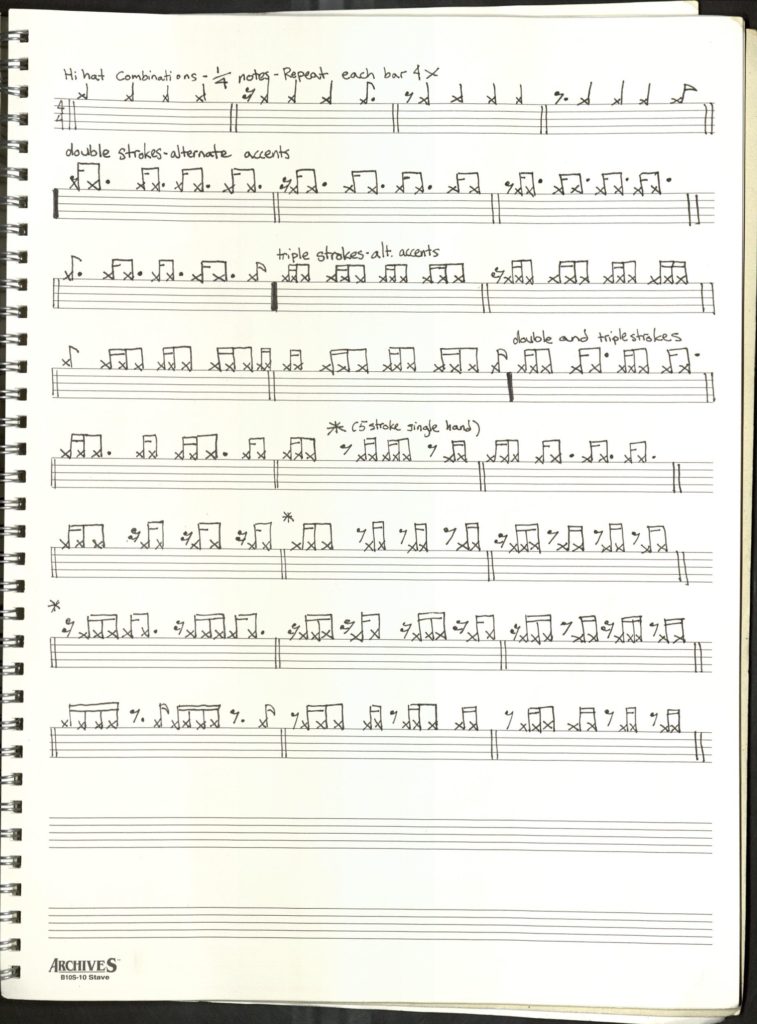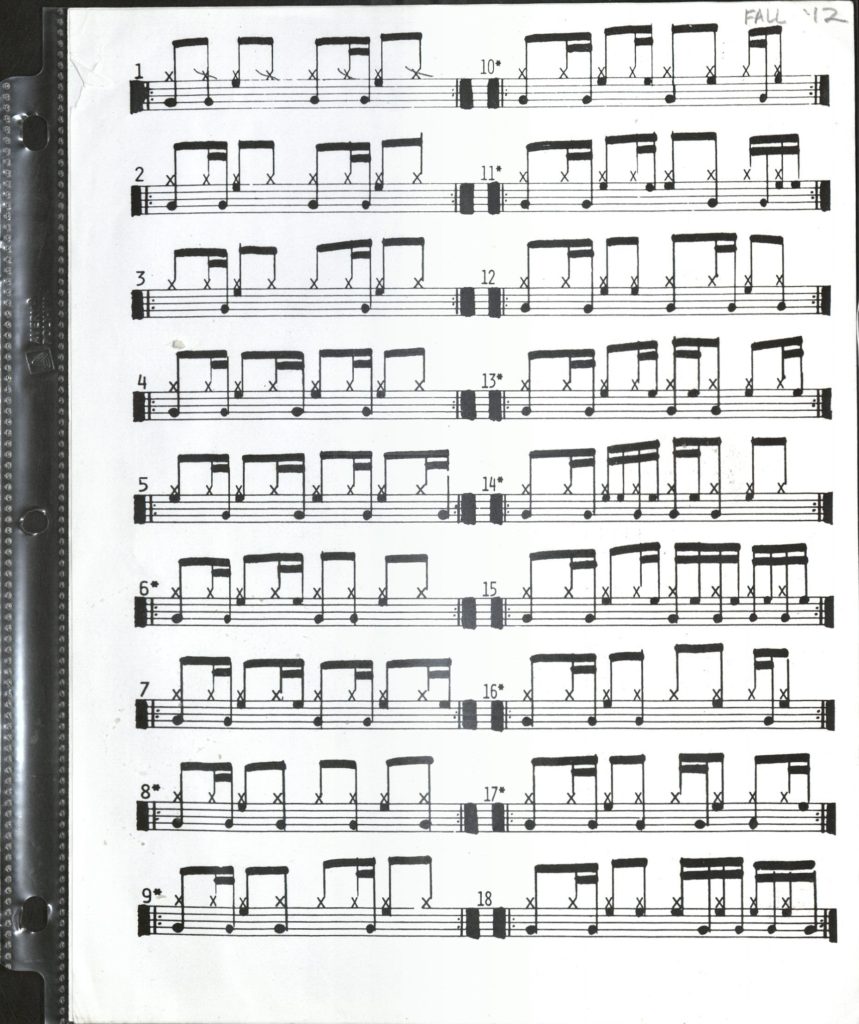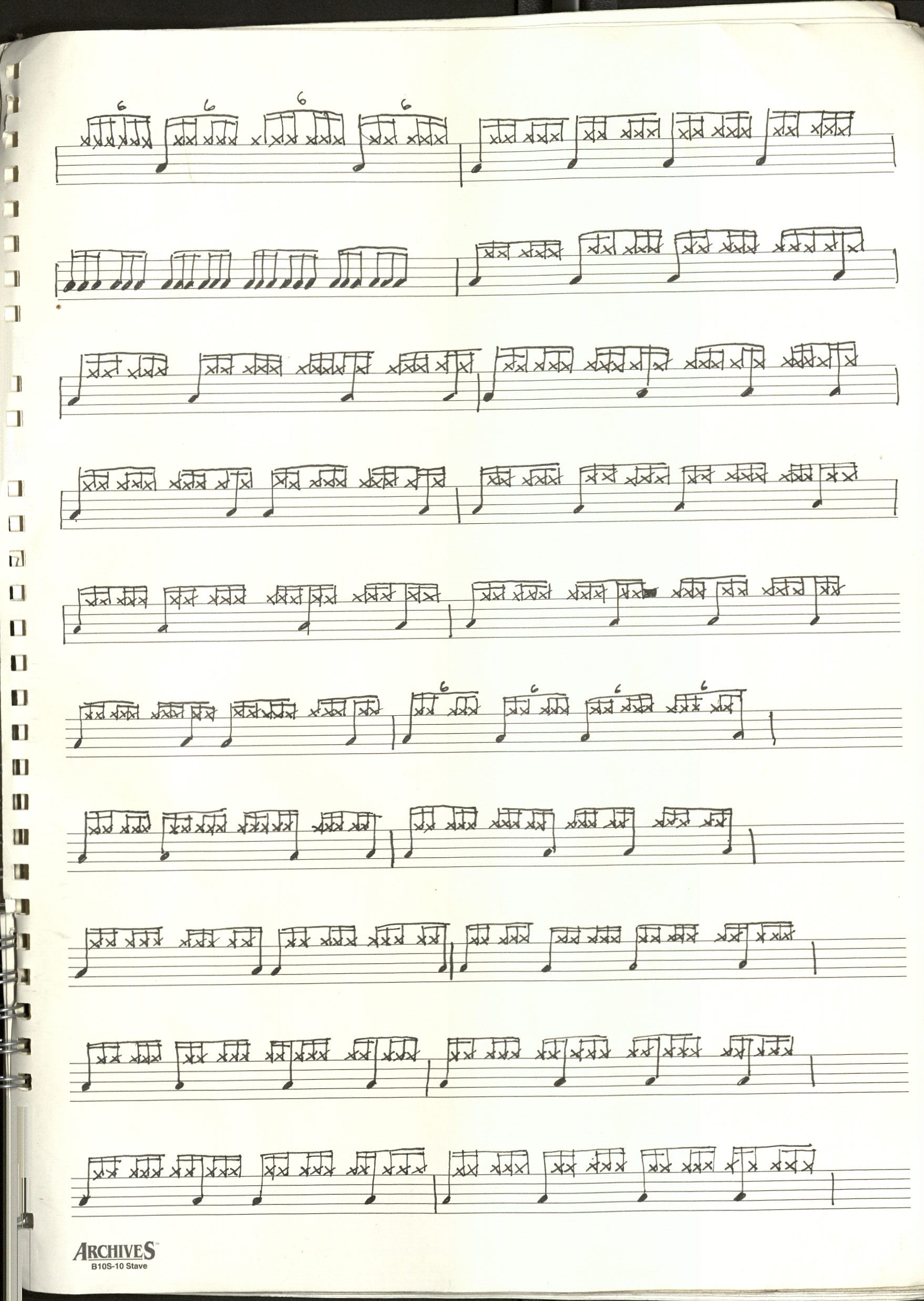In Funk and Reggae, it is imperative that a drummer be conscious of the sixteenth note pulse. To better understand this pulse, I created some exercises to help my internal metronome comprehend the feel using muscle memory. I took beats from a funk drumming book (“A Funky Primer” by Charles Dowd) and broke them down by sixteenth note. I would alternate patterns with the hihat while keeping the bass and snare in the same place.
When I was taking lessons, I was taught to play the funk beat with a regular eighth note pattern (1-and, 2-and, 3-and, 4-and). When I had that down, I would play the beat with a quarter note pattern (1, 2, 3, 4: see Herbie Hancock’s “Chameleon” for a great example of this style, implemented by the great drummer Harvey Mason). After graduating and having more time to explore my passion of funk and reggae drumming, I created my own exercises using these funk beats. I would play with different quarter note, eighth note, and sixteenth note patterns on the hihat (1-e, 2-e, 3-e, 4-e; rest-e-and; rest-and-a; rest-a-1, etc.). You can do this with a nearly infinite amount of combinations and could spend a lifetime alternating accents, rests and sixteenth notes to create many beats with different feels.
Reggae is played on the upbeat so a great exercise is to play the hihat on the beats 1-and-a, 2-and-a, 3-and-a, 4-and-a (etc.). Many funk songs will be played with sixteenth notes on the hihat through the whole bar (check out Maceo Parker’s “Shake Everything You Got” with drummer Kenwood Dennard as well as Bill Wither’s “Use Me” with James Gadson). Using two hands on the hat would limit your ability to comp with the snare so it is a good practice to be able to do the beat without using the standard rock-and-roll sixteenth note hihat beat. Also, your wrists and fingers will tire out eventually so you must “trick” the listener into thinking you are playing sixteenth notes throughout by leaving out certain notes while the either the bass or snare is playing on said notes. These exercises are great for this.
Play the hihat combinations in conjunction with the beats on the page that follows. The beats go from easy to hard starting from the top left column. I usually use a check pattern to get my feel first (bass drum on 1 and 3, snare on 2 and 4). When playing reggae, try omitting the bass on the 1 and 3 to get a “one-drop” feel. Check out reggae great Carlton Barrett of the Wailers band to listen to this done proper. After I have figured out the placement of the hihat, then I can play through the beat. I will then alternate where the accent is placed. Always use a metronome because if you don’t you are wasting your practice time.
For further development of your chops, try placing accents on different notes. Do it on the hihat and the bass drum. One of my teachers taught me to look at accent strokes as having three levels of volume. Play an accent relative to the notes around it. This is where dynamic contrast comes into play. If the unaccented note is a pianissimo, the accent could be piano, mezzo-piano, mezzo-forte, or even fortississimo, depending on the feel of the song.


Here are some exercises for hi hat dexterity. Most drummers know of the 16th note pattern on the hi hat used a lot in rock and roll and funk (a good example of this is “Crazy Train” by Ozzy Osbourne with drummer Lee Kerslake). This exercise utilizes a sextuplet pattern that can be used in solos or percussive heavy parts of songs. The hi hat sextuplet groove has a funky feel and can be fun to play with a band. Just add bass drum notes on the one and the three and you can make a beat out of the exercises. Then try to switch up where the bass notes fall and where the snare notes fall. Then work on your accents.

